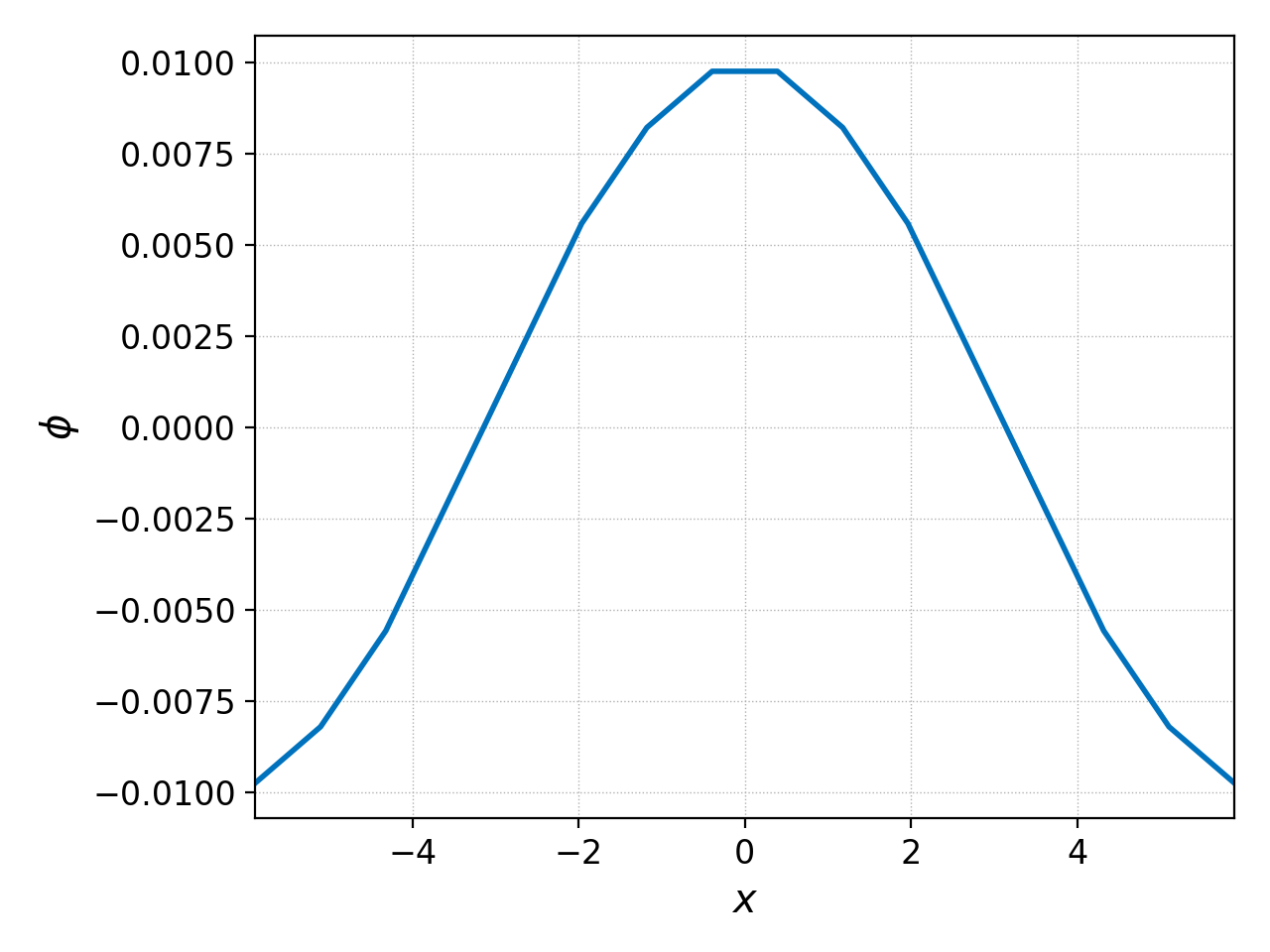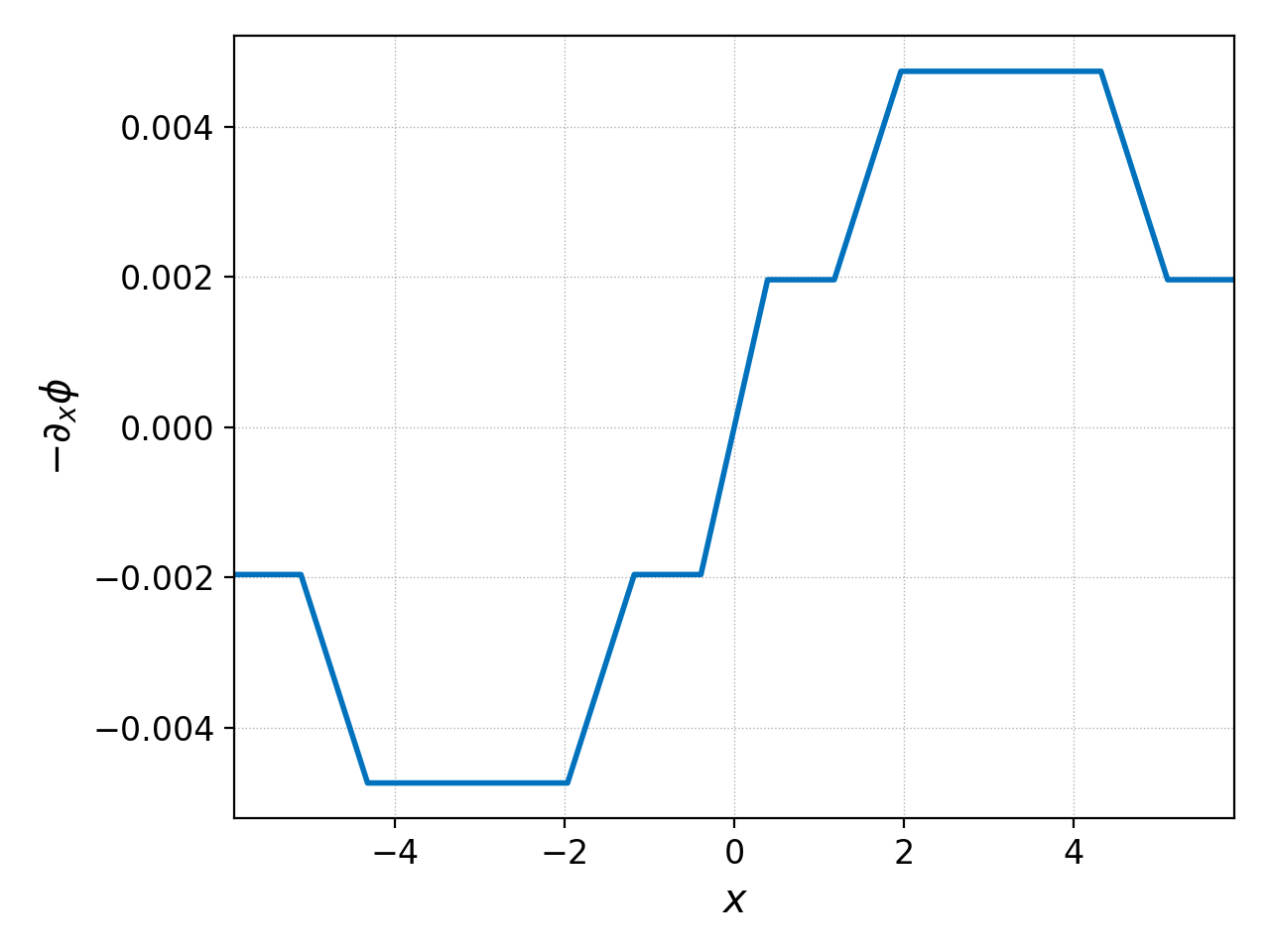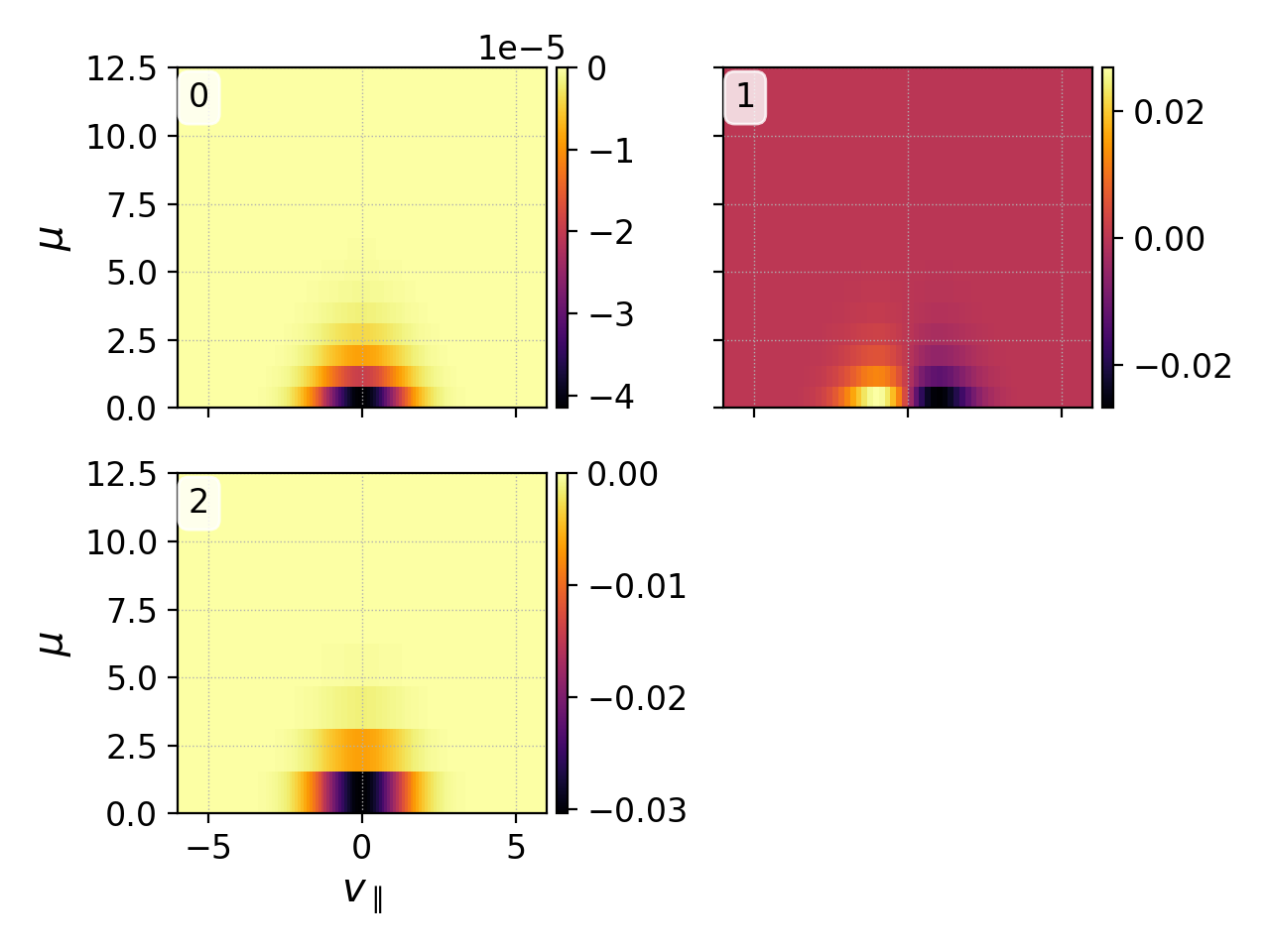differentiate¶
Compute the derivatives of a function along each direction.
This returns a dataset with as many components as there are
dimensions in the original dataset, i.e. it returns the gradient,
unless the -d flag is used to specify a direction.
This command takes the basis expansion in a cell, differentiates it analytically in the desired directions, and then interpolates it onto a finer mesh in the same fashion as the interpolate command.
Note that differentiation is also possible with the ev
command and the grad operation.
Command line¶
Command help
pgkyl differentiate -h
Usage: pgkyl differentiate [OPTIONS]
Interpolate a derivative of DG data on a uniform mesh
Options:
-b, --basistype [ms|ns|mo] Specify DG basis
-p, --polyorder INTEGER Specify polynomial order
-i, --interp INTEGER Interpolation onto a general mesh of specified
amount
-d, --direction INTEGER Direction of the derivative (default: calculate
all)
-r, --read BOOLEAN Read from general interpolation file
-t, --tag TEXT Specify a 'tag' to apply to (default all tags).
-o, --outtag TEXT Optional tag for the resulting array
-h, --help Show this message and exit.
Let’s take a gyrokinetic ion acoustic wave simulation as an example. We can examine the initial electrostatic potential generated by the initial conditions with
pgkyl gk-ionSound-1x2v-p1_phi_0.bp interp pl -x '$x$' -y '$\phi$'
giving the plot shown below on the left.


Suppose we wished to know what the initial electric field is, then we would differentiate the potential and multiply it by -1 as follows
pgkyl gk-ionSound-1x2v-p1_phi_0.bp diff -d 0 ev 'f[1] -1 *' pl -x '$x$' -y '$-\partial_x\phi$'
Note we we have abbreviated differentiate -> diff, either is allowed.
This command produces the electric field above on the right. It is cellwise
constant because we use a piecewise linear basis function.
Now suppose you wish to examine the gradient of the ion distribution function at \(t=0\) and \(x=0\). This can be accomplished with the following command
pgkyl gk-ionSound-1x2v-p1_ion_0.bp diff sel --z0 0. pl -x '$v_\parallel$' -y '$\mu$'
in order to produce:

Starting with the top left and going clockwise, this plot provides the gradient in \(f_i(x,v_\parallel,\mu)\) along \(x\), \(v_\parallel\) and \(\mu\), all three evaluated at \(x=0\).